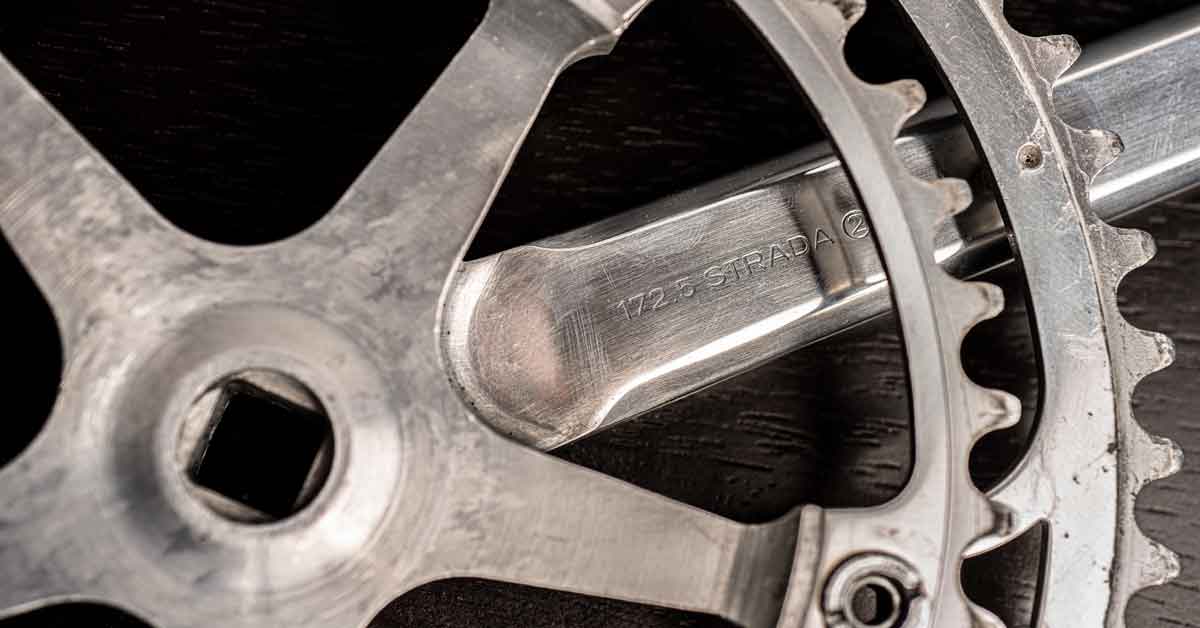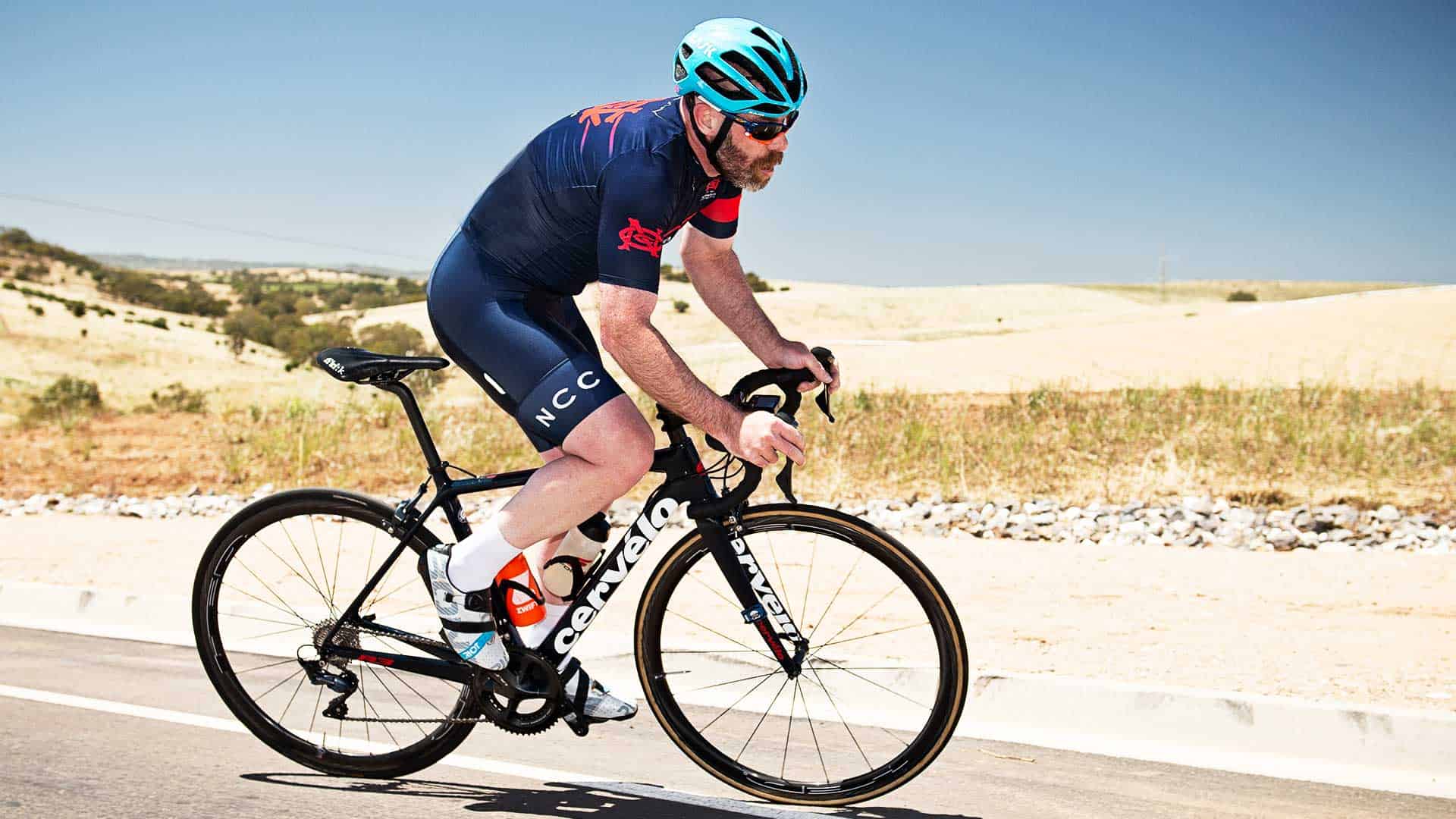Should crank length be proportional to leg length?
The issue of ideal crank length for a given rider and intended usage is a vexed one and the subject of endless debate. This article will be an attempt to cover the topic but not make recommendations. I will cover some of the information available and relate a few personal experiences and give mention to a website with interesting things to say about crank length for those that would like to pursue the idea further.
The great majority of road riders use cranks lengths between 170 – 175 mm and this has been the case for at least 30 years. Yet people are taller now than they were 30 years ago. One need only walk past a school bus stop to verify that.
Why are we using the same range of crank lengths? The answer to that is that we probably aren’t. 30 years ago, 170mm was ‘normal’, 172.5mm was longish and 175mm was considered to be quite a long crank and relatively uncommon. Whereas now 170 is ‘short’ 172.5mm is ‘normal’ and 175 mm cranks are very common. Still though, the difference between 170 mm and 175mm is less than 3% and leg lengths of bike riders vary by far more than that.
There is a school of thought, particularly in the United States, which suggests that crank length should be proportionate to leg length. Some iterations of this idea can be found on www.myra-simon.com/bike/cranks.html and there are plenty of others out there. If you want to investigate further, do a Google search for ‘proportional crank length’.
The idea of crank lengths proportional to leg lengths has some merit, particularly for exceptionally short or long legged riders.
Bicycle frames and handlebar widths depend respectively on the size of the rider and the breadth of their shoulders so why shouldn’t crank length be the same?
There are some practical considerations. Firstly, the majority of crank manufacturers make a limited range of lengths in road cranks. Campagnolo make between 170 mm and 180mm in 2.5mm increments. Shimano manufacture 165 – 180 mm in 2.5mm increments. Most smaller manufacturers only make 3 sizes; 170mm, 172.5mm and 175mm. Special mention should go to French manufacturer T.A. who make cranks ranging from 150mm to 185mm and South African manufacturer Graeme Murray who makes an adjustable carbon crank of reasonable lightness and the one pair that I have seen can be adjusted between 130 and 185mm though with a wider than normal Q factor. But even the Specialites T.A. range of 150 mm to 185mm represents a difference of 35mm from longest to shortest and the range of leg lengths of just my adult customers varies by approximately 300mm. So there is a potential case for both longer and shorter cranks than are common
Here are some of the commonly held ideas regarding crank length, particularly in the U.S. along with some personal critiques having tried to apply them at one time or another.
1. Crank length should be inseam measurement 0.216 (or inseam measurement in inches x 5.48 yields crank length in millimeters – same thing)
I first became aware of this idea from an American friend named Ron Haney. Ron is what I would describe as a positioning theorist and has some original ideas regarding position which I find alternately intriguing and frustrating. Ron is a believer in proportional crank length though he is open to argument about the numbers. If the inseam X 0.216 is applied, then anyone with an inseam of more than 810mm (which is not a long inseam) would need to use a crank of over 175mm. This would cause problems in that Shimano and Campagnolo only make cranks longer than175mm (177.5 and 180mm) are in their top of the line aluminium cranks. Equally, someone of average size like me at 182cm with an 860mm inseam would need to use a 185mm or similar crank and only T.A. make cranks that long as standard. Anyone much over 6 feet (183cm) is likely to have longer inseam than that again. Custom crank lengths are available in up to 220 mm in 1 mm increments from several sources but there is potential for problems when longer than standard cranks are fitted to production frames.
Really long cranks need bottom bracket heights that are higher from the ground to have adequate clearance between pedal and ground. Contrary to what you might think, this doesn’t raise the centre of gravity of the bike and rider as a package as the rider is no higher from the ground overall. Smaller riders could be closer to the ground as shorter than normal cranks mean that the bottom bracket height and hence standover height of a frame could be reduced while still maintaining adequate pedal to ground clearance around corners which can only be of advantage to the short legged. Chainstay length and the clearance between foot and front wheel become potential issues for users of extra long cranks as well. This means that the literal application of inseam x 0.216 opens a large can of worms. That doesn’t mean that it is necessarily wrong, but rather that the long legged rider going down this route would need a custom frame as production frames tend to be designed for the use of 175mm cranks or shorter. Short legged riders wouldn’t necessarily need a custom frame but some of the issues that can occur with small riders on 700c wheeled bikes like standover height and foot to front wheel clearance could be lessened with shorter than conventional cranks.
While I am sympathetic to the idea of proportional crank length, I am more sympathetic to the idea that any given ratio between crank and leg length shouldn’t be blindly applied.
Here are some other potential considerations:
a. Gender: inseam length and leg length are not the same thing. Whether there is a consistent ratio between leg length and inseam length I am not sure, but women seem to have shorter inseams for a given leg length (leg length is measured to the centre of the hip, not to the crotch as inseam length is) than men do. Any proportional based formula would need to account for the gender difference.
b. Leg proportions: the longer the lower leg for a given leg length, the higher the knee will rise for a given crank length. This can place practical limits on crank length particularly for riders who have the ability to ride with their handle bars low. Having your upper thigh foul your rib cage when on the drops is not conducive to performing well in the long term.
c. Foot length: depending on foot size and assuming a middle of the road pedaling technique, the longer the foot relative to leg length, the further the rider can reach. This should probably play some part in any equation based on proportions.
d. Flexibility: if a rider is tight in the hamstrings they cannot effectively have as high a seat height as would be possible with more flexible hamstrings. The lower the seat height for a given leg length, the higher the knee will rise for a given crank length.
e. Functional issues: longer cranks bring the potential for greater loads on the knee. If the rider has problems with foot/ankle or hip/lower back that set the scene for knee problems ( in the sense of the knee being a single plane joint positioned between two multi plane joints the movement of which can dictate the plane of movement at the knee) then longer cranks can sometimes be enough to push that rider over the edge into injury.
f. Pedal strike: the longer the crank length the great the chance of pedal strike. Pedal strike is when the bottom of your pedal strikes the road while pedalling through a corner, usually at high speed. This is of particular importance for cyclists racing in criteriums when a pedal strike can cause a rider to fall and possibly bring down other riders.
2. Crank length in cm should be the same as femur length in inches (alternately, crank length in cm divided by 2.54 equals crank length yields the same result)
This is based around the idea that the upper leg is the major lever when applying force to the pedals and that the lower leg is the connecting rod and plays little part. I would agree in a general sense but don’t think the pedaling action is that simple. Without going into the merits of this statement, the practical consideration is how to accurately measure femur length. The only definitive way would be with a CT scan or similar. Femur length can be measured from bony landmarks but you will probably get differing results depending on who measures it as it is relatively easy to make mistakes with this method. The idea of femur length being a determining factor sits better with me than inseam length as it reduces the chances of the upper leg fouling the ribcage but even so flexibility, foot length and bar height should play a part to some degree.
3. Various tables, with often conflicting recommendations of crank length to leg length
If you want to really search around, there is a lot of this stuff out there. Some of it is in cycling books, some of it from crank manufacturers and so on. The problem is that many disagree and give wildly differing recommendations so the reader is no better off.
I have seen successful elite riders effectively use various proportional crank lengths from Eddie Salas using 170 mm for his 790mm inseam ( very close to the American idea of 0.216 of inseam length) to now retired Sydney A grader Ben Litchfields’ 172.5mm for his 950mm inseam ( 0.182 of inseam length) so what practical advice can I offer?
If you can’t raise your seat height without struggling at the bottom of the pedal stroke but have clearance issues between rib cage and upper leg when riding in the drop bars then your cranks are probably too long. Conversely, if you have no problems at either end of the pedal stroke then I won’t say that you need longer cranks, just that you have room to experiment.
Experimenting is not as easy as it should be because of the cost of changing cranks. Adjustable length cranks are available in up to 220 mm and custom length cranks can be made in 1 mm increments up to 220 mm that I am aware of for those that are interested enough to pursue it. I have one customer using 200mm cranks but as he has a 980mm inseam, this is a reasonably conservative length for the use he puts them too.
I have used 172.5 mm cranks in the main but have used every length from 170 – 185 playing around. I am still on the 172.5s’ but currently playing with 180’s as well. Which brings me to the final statement.
I suspect that other than very long or short legged riders, we all have two effective crank lengths – the one we are used to and the one we should be using.
If you get the chance to play with significant differences in crank length, do so as it is an interesting exercise. Unless you are potentially prepared to go down the custom frame route there will be limits to what is practical.
Written by Steve Hogg.






Leave A Comment